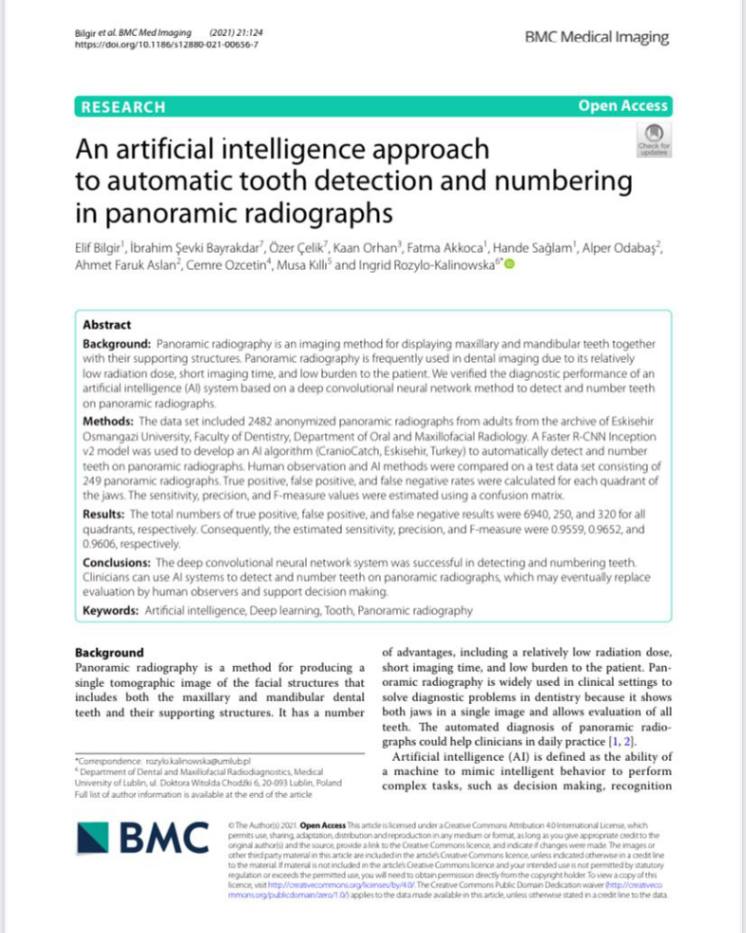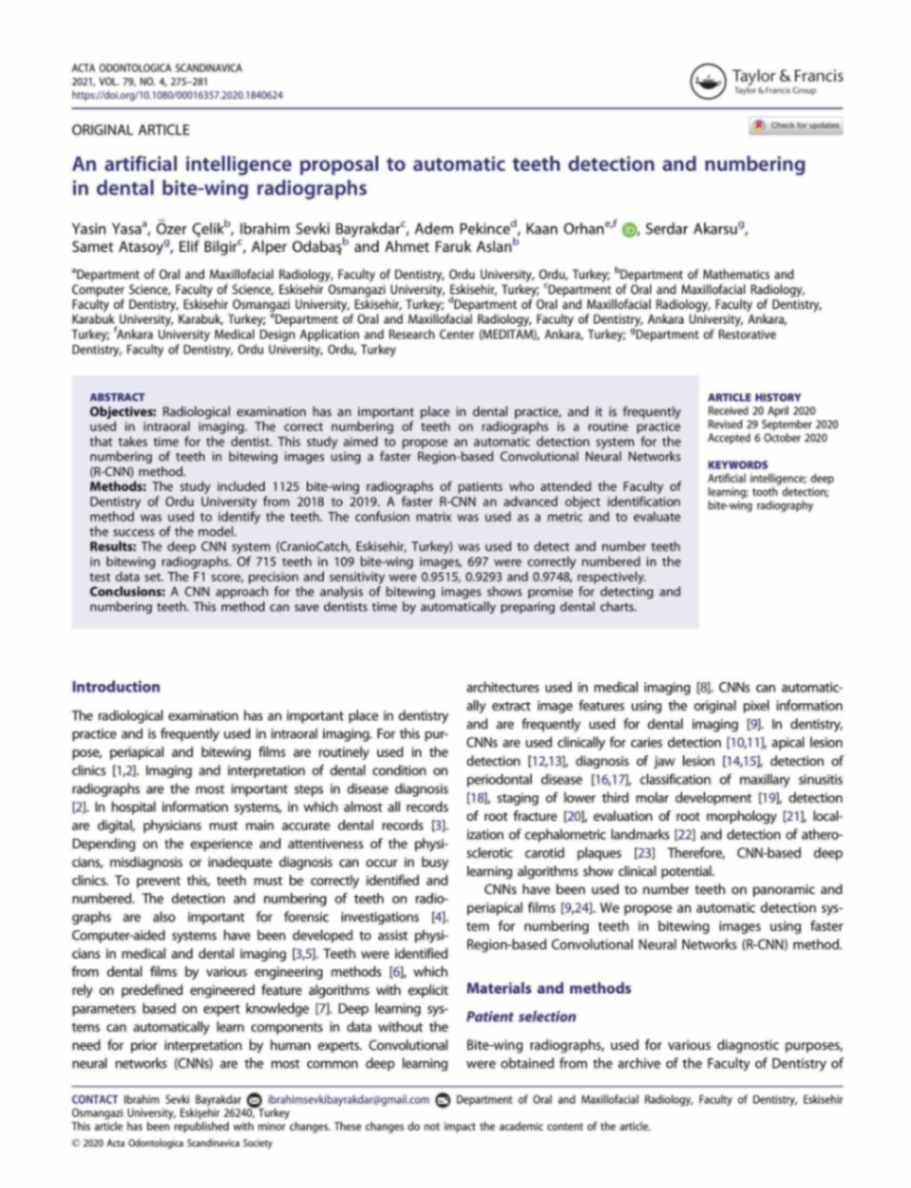Artificial Intelligence System for Automatic Maxillary Sinus Segmentation on Cone Beam Computed Tomography Images
Summary
This study investigates the application of an artificial intelligence (AI) system to automatically segment the maxillary sinus in cone beam computed tomography (CBCT) images. Accurate segmentation of the maxillary sinus is crucial for various dental and medical applications, including implant planning, sinus pathology diagnosis, and pre-surgical assessments.
Objectives
The primary objective of this study is to evaluate the performance and accuracy of a deep learning-based AI system in segmenting the maxillary sinus on CBCT images. The study aims to compare the AI system's performance with manual segmentation by experienced radiologists.
Methodology
- Data Collection: The study utilized a dataset of CBCT images from patients requiring maxillary sinus evaluation.
- AI Model: A convolutional neural network (CNN) was employed for the segmentation task. The model architecture was designed to capture intricate details of the maxillary sinus structures.
- Training and Validation: The dataset was split into training and validation sets. The AI model was trained on the training set and validated on the validation set. Manual segmentations by expert radiologists served as the ground truth for comparison.
- Performance Metrics: The performance of the AI system was evaluated using metrics such as Dice Similarity Coefficient (DSC), Intersection over Union (IoU), precision, recall, and overall segmentation accuracy.
Key Findings
- Segmentation Accuracy:
- The AI system achieved high segmentation accuracy, with a Dice Similarity Coefficient (DSC) exceeding 0.90, indicating a strong agreement between the AI and manual segmentations.
- The IoU metric also reflected high accuracy, demonstrating the AI system's ability to accurately delineate the maxillary sinus boundaries.
- Efficiency and Consistency:
- The AI system significantly reduced the time required for segmentation compared to manual methods, enhancing clinical efficiency.
- The automated segmentations were consistent across different patients and imaging conditions, showing the robustness of the AI model.
- Clinical Implications:
- The integration of AI for maxillary sinus segmentation can aid clinicians in diagnosing sinus pathologies more quickly and accurately.
- It can also facilitate better planning for dental implants and other surgical interventions by providing precise anatomical maps.
- Comparison with Manual Segmentation:
- While the AI system performed exceptionally well, minor discrepancies were observed in some cases, typically in areas with complex anatomical variations.
- The study highlights the importance of continuous model training and validation with diverse datasets to address these variations.
Discussion
- Advantages of AI Segmentation:
- AI offers a rapid and consistent alternative to manual segmentation, reducing the workload for radiologists and allowing for faster clinical decision-making.
- The high accuracy of AI models supports their use in routine clinical practice, potentially improving patient outcomes through timely and precise interventions.
- Challenges and Future Directions:
- The study acknowledges challenges such as the need for extensive and diverse training datasets to further enhance model generalizability.
- Future research could explore the integration of AI segmentation with other diagnostic tools and its application to different anatomical regions and pathologies.
Conclusion
The study demonstrates that AI systems, particularly those based on CNNs, are highly effective for automatic maxillary sinus segmentation in CBCT images. The high accuracy and efficiency of AI-driven segmentation hold great promise for enhancing various clinical applications in dentistry and medicine. Continued advancements in AI technology and further research are essential to fully realize its potential in clinical practice.
I Want to Write a Scientific Research Project
CranioCatch is a global leader in dental medical technology that improves oral care in the field of dentistry. With AI-supported clinical, educational, and labeling solutions, we provide significant improvements in the diagnosis and treatment of dental diseases using contemporary approaches in advanced machine learning technology.
CranioCatch serves thousands of patients with dental health issues worldwide every day with its innovative technologies. That’s why we eagerly look forward to meeting our valued dentists who wish to work in the field of 'Scientific Research in Dentistry'.



 Contact Us
Contact Us

